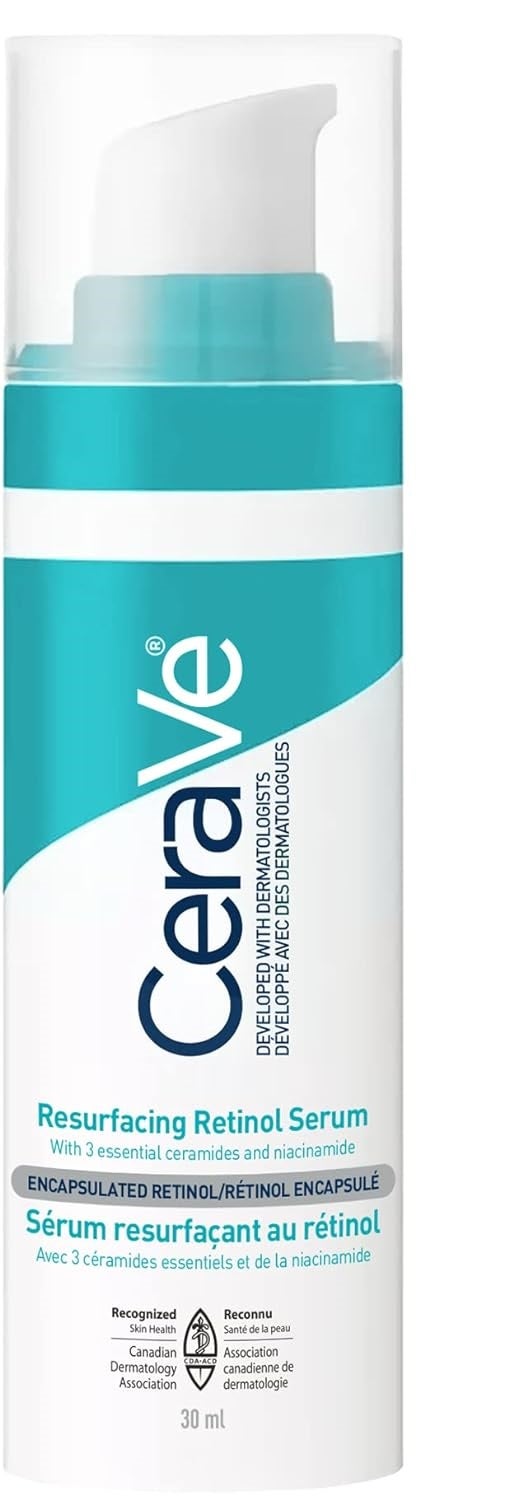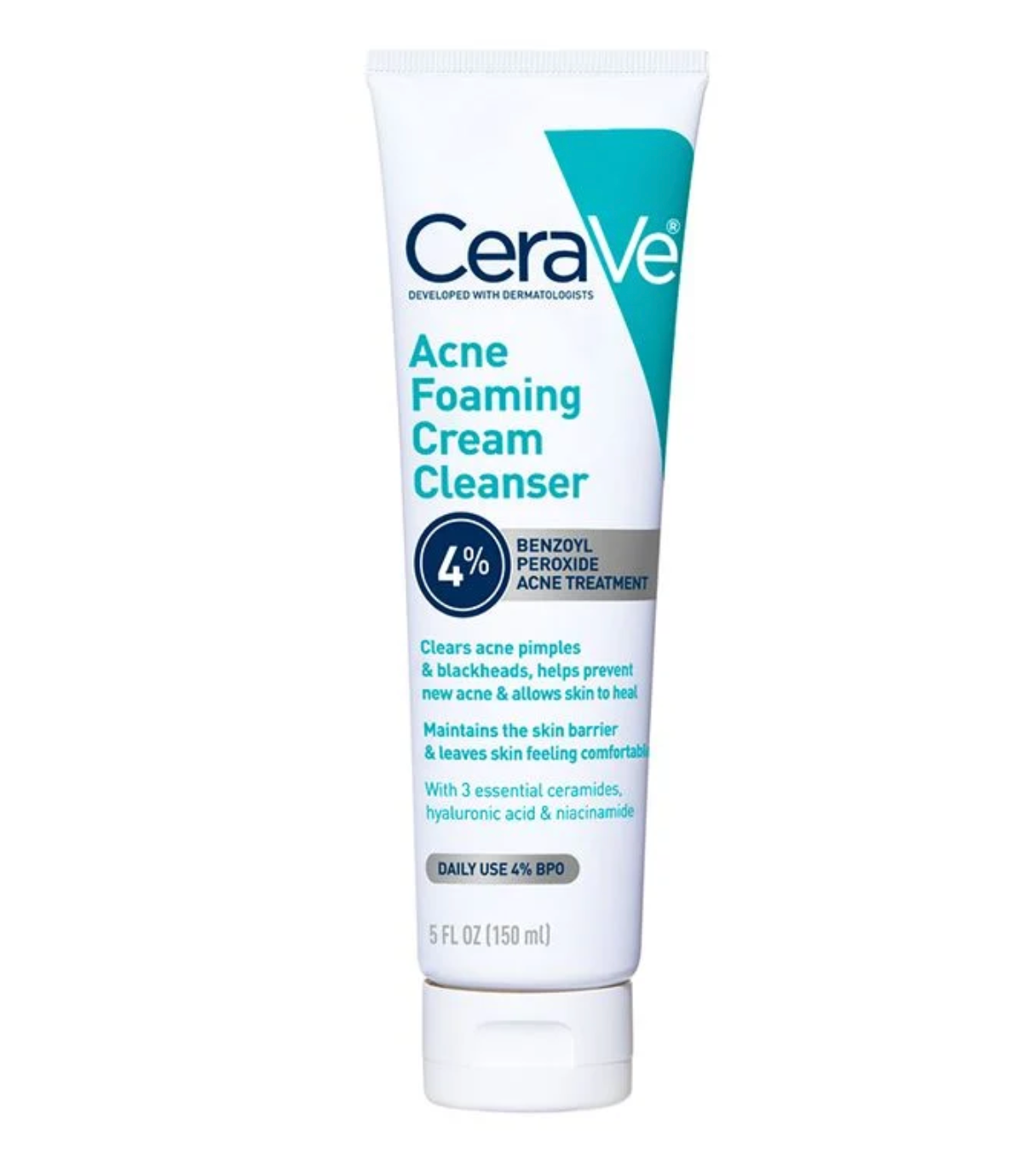POV: You’re An Adult & You Suddenly Have…Acne?
If you survived adolescent-hood with nary a zit, it can be jarring to develop skin concerns in adulthood — once you're seemingly in the clear (so to speak). The good news: You’re not alone. Acne, the very common inflammatory skin disorder that causes breakouts, is estimated to affect 12% to 22% of adult women. So, no, it’s not just a teenage thing — contrary to popular belief (and, ahem, popular culture).
And the even better news: You need not shell out big bucks for high-stakes, of-the-moment facial treatments, outlandish prescriptions, or high-tech devices, should you want to treat adult acne. With just a few key ingredients and some expert-backed guidance, late-in-life acne can be easier to manage than you might think.
AdvertisementADVERTISEMENT
In partnership with CeraVe, we broke down everything you need to know about adult acne, from various triggers and types, to different ways to treat (and prevent) breakouts. Read on, and be sure to shop our recommended acne-fighting drugstore picks, below.
What Is Adult Acne?
Adult acne — or post-adolescent acne — is exactly as it sounds: the simple development of acne in adulthood (according to Harvard, specifically after the age of 25). The condition affects women more often than men, and it can present both in people who’ve previously experienced acne in their adolescent years and adults who’ve never had to deal with breakouts before. The latter, according to the American Academy of Dermatology Association (AAD), is what’s known as adult-onset acne. It can occur wherever oil glands are on the skin, including the face, back, chest, and buttocks. But the most important thing to know about adult acne, according Vee Mistry, Canada-based celebrity facialist and skin-care expert, is that "adult acne can happen to anyone.”
What Triggers Adult Acne?
Acne occurs when hair follicles, which live under the skin, become clogged with things like excess sebum (aka oil) and dead skin cells, resulting in inflammation — and subsequent blemishes. A range of factors can contribute to adult acne: excess oil production, hormones, beauty products that contain pore-clogging ingredients, diet-induced inflammation, and even certain medications, per the AAD. Stress, genetics, and environmental irritants can also play a role in triggering acne in adulthood, according to the National Institutes of Health.
AdvertisementADVERTISEMENT
What Are The Different Types Of Adult Acne?
Adult acne — and acne in general — ranges in severity, and the three main categories (mild, moderate, and severe) differ based on the type of blemish and the quantity. Before we get into how each category is defined, it's important to identify the most common acne spots: whiteheads (plugged follicles that produce a bump with a white tip), blackheads (plugged follicles that open up and turn black due to oxidization), papules (small red or pink bumps that appear raised on the skin), pustiles (papules that include white or yellow pus in the center), nodules (large, painful bumps that sit underneath the skin), and cysts (pus-filled lesions that are deep beneath the skin and often painful).
Mild acne consists of mostly whiteheads and blackheads, with some papules and pustules present. Moderate acne features even more whiteheads and blackheads, plus many papules and pustules. Finally, severe acne includes lots of papules, pustules, nodules, or cysts, and it can also result in scarring.
How Do You Treat Adult Acne?
While it's always wise to visit a dermatologist or healthcare professional for any skin-care concerns (especially when more severe acne is involved), certain over-the-counter products can also help banish breakouts, thanks to a few essential ingredients that have been scientifically proven to help treat acne when applied topically (consider them some of acne's most powerful nemeses) .
First up? Benzoyl peroxide. This potent, zit-fighting formula comes in cleansers, masks, lotions, spot treatments, and more, ranging in percentages of intensity. Its efficacy boils down to its antimicrobial and exfoliating properties, which help kill the bacteria that thrives in clogged pores and remove dead skin cells. (Note that while benzoyl peroxide works quickly and powerfully, it can also cause irritation — and bleached linens.)
AdvertisementADVERTISEMENT
Next up is salicylic acid, a powerful beta hydroxy acid that Mistry dubs a total "game-changer." The oil-soluble acid works by penetrating, unclogging, and exfoliating pores to remove excess sebum, dead skin cells, and bacteria, she explains. It's also great for its anti-inflammatory properties, which help keep redness and swelling at bay. Like benzoyl peroxide, it comes in various percentages depending on the skin-care product, and it can cause irritation (Mistry says to avoid using it twice a day as it can over-strip the skin, too).
Finally, there's retinol, one of the most beloved and buzzy skin-care ingredients out there for its many benefits, from fighting fine lines and wrinkles to, yes, treating acne. "Retinol is another powerhouse ingredient with substantial clinical backing," notes Mistry. "It not only helps in resurfacing the skin's texture, but also accelerates cell turnover. This is particularly beneficial for fading any post-acne scarring." And if you thought you needed a prescription to acquire the stuff, think again. You'll find it in plenty of OTC products, too.
Moreover, treating acne is one thing, but it's equally important to allow your skin to heal. "Taking care of the skin barrier is paramount, especially when using potent ingredients like retinol, benzoyl peroxide, and salicylic acid," says Mistry. "The skin barrier serves a dual purpose: It locks in essential moisture and keeps out harmful pollutants. When this barrier is compromised — often due to the overuse of strong ingredients — it can lead to dryness and an overproduction of sebum, which in turn perpetuates the acne cycle."
AdvertisementADVERTISEMENT
One of the most effective ways to care for your skin barrier is by using ceramides in tandem with the acne-fighting ingredients above. Ceramides are the fatty lipids that make up your skin barrier (aka the outermost layer of the skin). They're considered the "glue" that holds skin cells together, and because acne can also compromise your skin's barrier, it's key to replenish them. Look for skin-care products that contain them — even better if they also contain ingredients like hyaluronic acid, a moisturizing workhorse that acts like a sponge to lock in hydration, or niacinamide, a gentle form of vitamin B3 that increases hydration, calms irritated skin, and even helps improves signs of environmental damage, like premature aging or discoloration.
The Bottom Line
Adult acne is a common skin condition that doesn't necessarily require expensive prescription treatment. "The key," Mistry says, "lies in a well-curated home-care regimen. No matter how effective a prescription or in-clinic treatment may be, it's the daily skin-care routine that makes or breaks the results. If you're not using the right products at home, you risk exacerbating the issue. So, a carefully selected range of over-the-counter products with the right active ingredients can be just as effective in balancing and correcting adult acne."
If you're looking for OTC recommendations, consider CeraVe's range of acne-fighting skin-care products, which are accessible (read: available at your local drugstore and online) and highly effective (all were developed with board-certified dermatologists). We're partial to the Acne Foaming Cleanser, which contains 4% benzoyl peroxide plus three essential ceramides, hyaluronic acid, and niacinamide for fighting breakouts while restoring the skin barrier; the Acne Control Gel, which includes 2% salicylic acid, ceramides, and niacinamide to clear up acne and prevent new breakouts; and the Resurfacing Retinol Serum, which includes retinol, ceramides, and niacinamide to help minimize pores, reduce hyperpigmentation, and refine skin.
AdvertisementADVERTISEMENT










